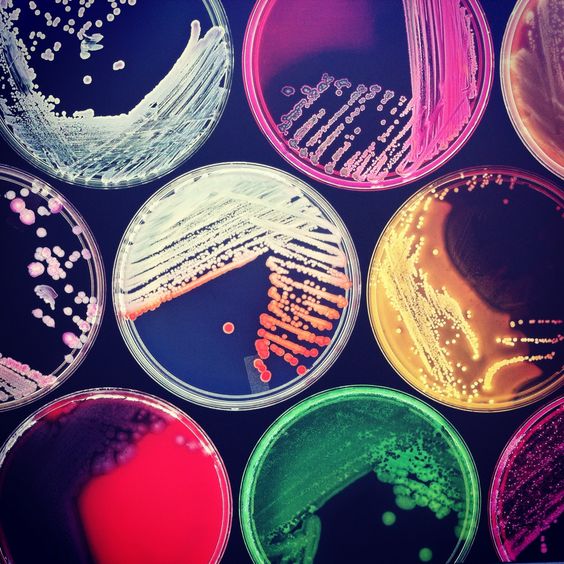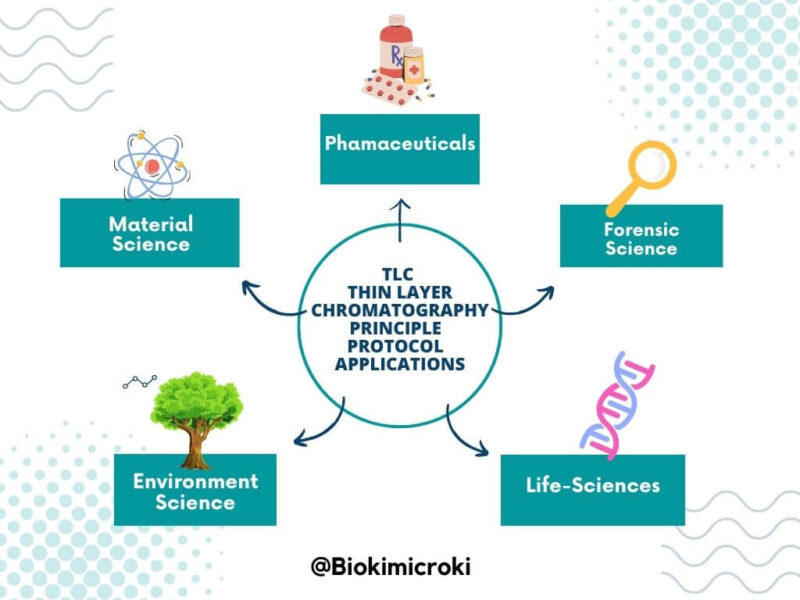Bacterial Growth means increase in cell size and number. As said by Jacques Lucien Monod, a Nobel Prize winner (1949) that handling microbial cultures is a fundamental methodology of microbiology and mastering different cultivation techniques should be part of every microbiologist’s craftsmanship.
To conduct any kind of studies or research on microorganism, the very first need is to grow the microorganism in our lab. To grow them, a microbiologist should be acquainted with basic knowledge of the bacterial nutritional and physical environment need.
The bacteria need the nutrition and optimum physical environment to conduct its molecular, physiological activity and to multiply. The nutrients means the organic and inorganic material obtained from environment for the Bacterial Growth and multiplication. The nutrients are categorized into two – major and minor nutrients. This categorization is based on the quantitative requirement.
The major nutrient is required in large amount whereas the minor nutrients are required in small or trace amounts. The major nutrients are mostly involved in the formation of the backbone of biomolecules and in metabolism The minor nutrients are found to be more involved as a co-factor of enzymes and playing role in stabilizing protein structure. The carbon, hydrogen, nitrogen, sulfur, phosphorous, magnesium, iron, potassium, oxygen and calcium are major nutrients; Manganese, Cobalt, Zinc, Copper, and Molybdenum etc are trace elements. The essential nutrients means the nutrients without which the microbes or any other organism cannot grow.
| Element | % dry weight | Source | Function |
| Carbon | 50 | Organic compounds or CO2 | Main constituent of cellular material |
| Oxygen | 20 | H2O, organic compounds, CO2 and O2 | Constituents of cell material and cell water; O2 is a final electron acceptor in aerobic respiration |
| Nitrogen | 14 | NH3, NO3, organic compounds, N2 | Constituent of amino acids, nucleic acids, nucleotides and co-enzymes |
| Hydrogen | 8 | H2O, organic compounds and H2 | Main constituent of organic compounds |
| Phosphorous | 3 | inorganic phosphates (PO4) | Main constituent of nucleic acids, nucleotides, phospholipids, LPS and techoic acids |
| Sulfur | 1 | SO4, H2S, organic sulfur compounds | constituents of cysteine, methionine, glutathione and coenzymes |
| Potassium | 1 | Potassium salts | Main cellular inorganic cation and cofactor for few enzymes |
| Magnesium | 0.5 | Magnesium salts | Inorganic cellular cation, cofactor for certain enzymes reactions |
| Calcium | 0.5 | Calcium salts | Inorganic cellular cation, cofactor for certain enzymes and a component of endospores |
| Iron | 0.2 | Iron salts | Component of cytochromes and certain nonheme iron proteins and a cofactor for some enzymatic reactions |
| Minor elements | Mostly involved as cofactor for enzymes |
Physical requirements for Bacterial Growth
Bacteria not only need nutrients for its growth but also need ambient physical environment such as temperature, pH and gases. Such physical environment is need for carrying out the biochemical and molecular pathways of bacterial cell. The need for such physical environment varies from bacterial species to species. And hence, it is also used as a parameter for classifying bacteria. The physical environment at which bacteria grow at its maximum rate is called as optimum environment.
- Temperature-
Temperature is an important factor for maintain the Bacterial growth. The optimum temperature means the temperature at which bacteria can grow at maximum rate. This optimum temperature range and requirement varies from bacterial species to species. The temperature affects the spatial arrangement of the atoms in the biomolecules and hence at the optimum temperature the biomolecules retain the stable and active structure which enables it to carry out its function. Based on the range of required temperature, the temperature is divided into minimum temperature, optimum and maximum temperature. When the temperature is raised from maximum limit the biomolecules get degraded.
Classification of bacteria on the basis of temperature-
- Thermophilic – The microorganisms that prefers or loves the temperatures beyond 40°C are called as Thermophiles.
- Hyperthermoohiles – the microorganisms that grows in temperature more than 80°C
- Mesophiles – the microbes that grows in the range of 20 to 40°C are called as mesophiles
- Psychrophiles – The microbes that grows between 0 to 20°C are called as psychrophiles.
- Cryophiles – The microbes that grows in less than 10°C
The bacterial species that grows above 80°C or less than 0°C have adpated to such extreme environment by changing the structure of proteins and cell wall. Microbes found at low temperature are rich in hydrophobic amino acids and have less number of secondary bonds. They employ antifreeze proteins and protect the cells from forming ice crystals. Their cell wall is made from unsaturated lipids that increase its fluidity.
The microbes that grows at extreme high temperature have more number of covalent and non covalent (secondary) bonds. Such additional bonding protect the proteins and enzymes from high temperature. Taq DNA polymerase is a DNA polymerase isolated form Thermus aquaticus is used for amplifying DNA in PCR. The genetic material i.e. DNA is found to be rich in GC content.
2. Solutes and Water
The microorganism is separated from the environment by the selectively semi permeable membrane. The membrane also plays a vital role maintaining the internal solute and water content. When the environment is changed in terms of water or solute concentration in the outside environment it affects the internal content due to the semi permeability nature of membrane. The surrounding environment, medium or solution can be hypertonic, hypotonic, and isotonic. There are few channel gates which allow the flow of water across the membrane.
- Hypertonic medium –
In hypertonic media, the concentration of solute in higher in media than the cell due to which water from cell goes out and causes cell shrinkage.
- Isotonic medium –
In Isotonic media, there is balance of concentration of solutes and ions outside and inside the membrane of cell. This is the optimum physical environment of solute and water content for the Bacterial growth.
- Hypotonic medium-
In hypotonic medium, the solute and ions concentration is less than it is present inside the cell and hence the water molecules moves in and causes swelling of the cell. This may also lead to bursting of the cell.
3. pH
pH stands for Potential of Hydrogen. It refers to the hydrogen ion concentration in a solution. It is the measure of the acidity or alkalinity of a solution. The pH value ranges from 0 to 14 on a pH scale. If the pH value is in between 0 to 7 than it is said to be acidic, it is 7 then it is neutral and when it is between 7 to 14 it is said to be basic.
The H+ ions concentration has strong impact on the physiological and molecular process of cell. The microorganism may grow to a wide range of pH but there is always a maximum and minimum tolerable limit. Sudden change in pH of cytoplasm may lead to death of cell.
Based on the difference in the favourble H+ ions concentration, the microbes are classified as –
- Acidophiles – Loves high H+ ions concentration and hence grows below pH 5.5.
- Basophiles/Alkalophiles – Loves alkaline environment and hence grows above 8.5 pH
- Neutrophiles – They tend to grow around neutral pH i.e. from 5.5 to 8.5 pH. Neutrophiles are mostly pathogenic for us because our body pH also ranges in the same.
4. Oxygen concentration-
The microorganisms which need oxygen for its growth are called as aerobes while the microorganisms which grow only in the absence of oxygen are called as anaerobes. The oxygen is used for oxidizing and metabolising the sugar or fat and to produce enegry. Based on the requirement of oxygen concentration, the above classification is further classified as obligate, facultative and aerotolerant.
- Obligate aerobes– The microbes which can only grow in presence of oxygen and die in its absence.
- Facultative aerobes – The microbes which grows in presence or absence of oxygen, such organism have ability to switch from aerobic respiration to fermentation and vice versa depending upon the available physical environment. The aerobic respiration is more efficient in terms of ATP production.
- Aerotolerant aerobes– These microbes do not need oxygen for its respiration and hence can grow in its presence and absence. Such microbes have only fermentative types of respiration.
- Obligate anaerobes – These microorganisms die in presence of oxygen. For such microbes, oxygen is toxin. They cannot tolerate oxygen because of lack of enzymes such as superoxide dismutase, catalase and peroxidase. When oxygen oxidizes the sugar and fats, in this process free oxygen radials are formed which are very harmful for cells. The superoxide dismutase and peroxidase stabilises the free and hyperactive oxygen radical. Absence of these enzymes cannot detoxify the effect of free oxygen radical and hence cause cell death
- Capnophilic – Microbes that grows in presence of high concentration of carbon dioxide.
5. Pressure-
Most of the bacterial species spend their time on the surface. This can be the earth crust, water etc. which has the atmospheric pressure of 1 ATM. Pressure is defined as the physical force exerted on an object. Similar to temperature and pH, the microbe has also the ability to tolerate range of pressure.
- Barotolerant are those who do not need high pressure for Bacterial Growth but can tolerate it. The high pressure reduces the multiplication rate of barotolerants.
- Barophiles microbes love the high pressure and hence they are type of extremophiles.
References:
https://www2.nau.edu/~fpm/bio205/chapter6.html
http://seafoodhaccp.cornell.edu/blackboard/module2/list3.html
https://www.lamission.edu/lifesciences/lecturenote/mic20/Chap06Growth.pdf


